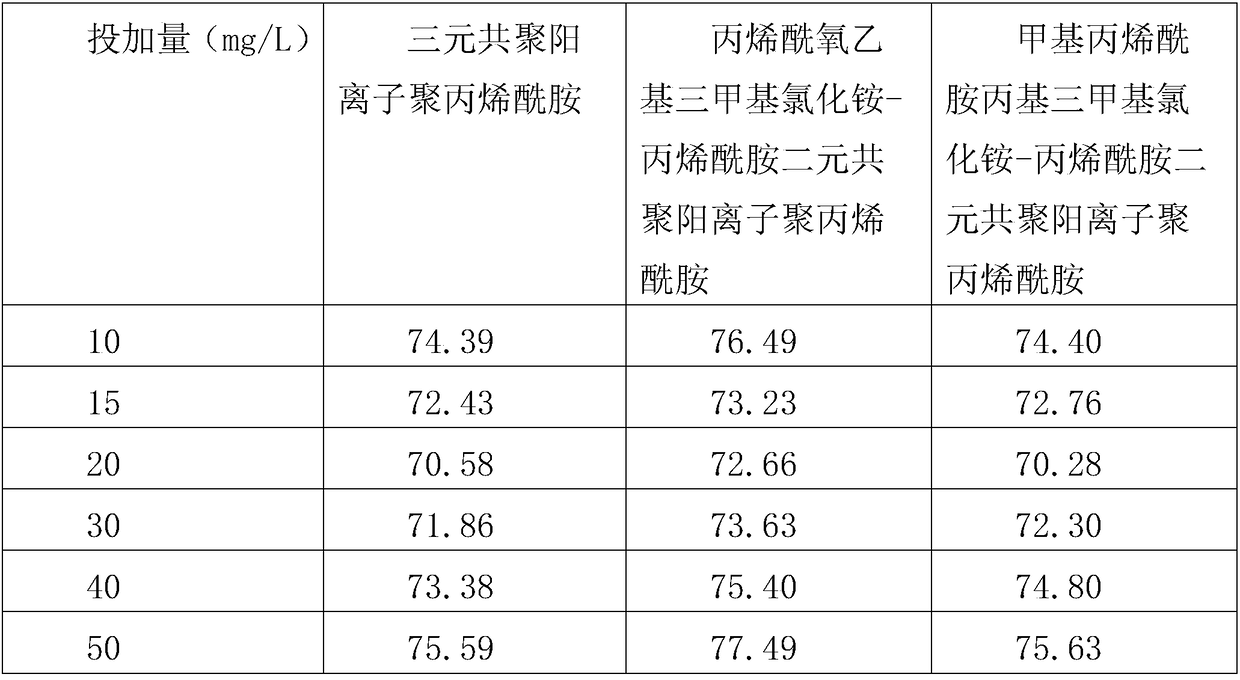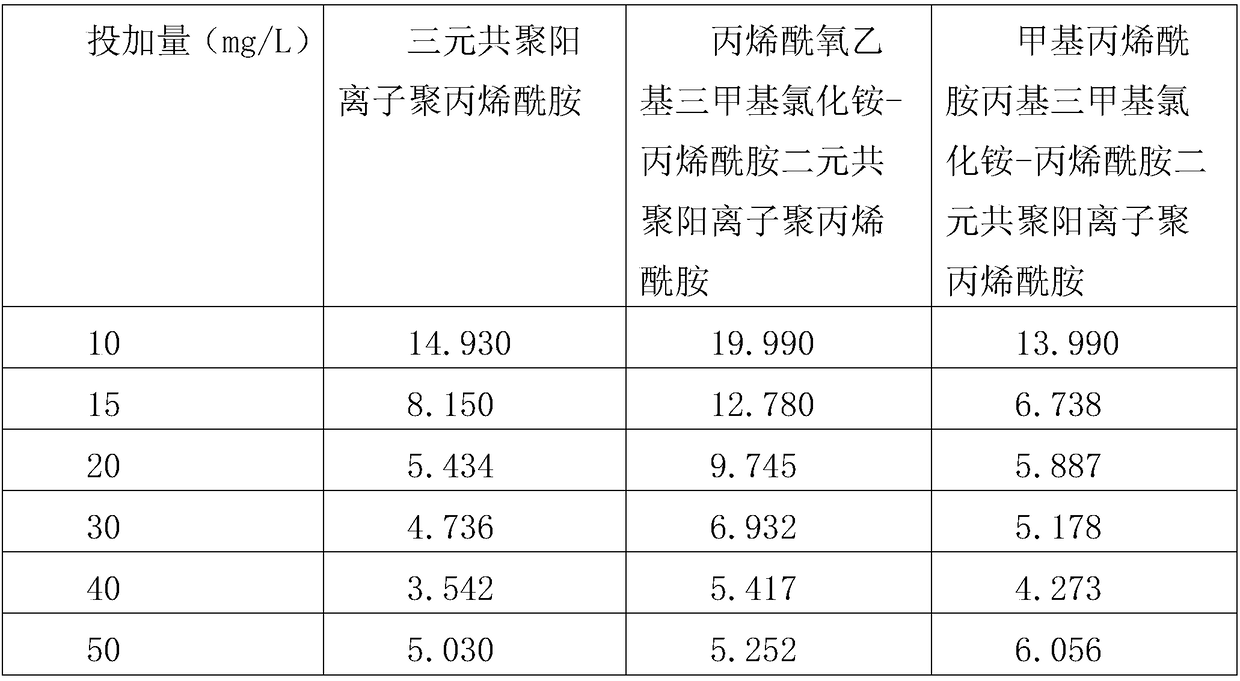Preparation method of ternary copolymerized cationic polyacrylamide
A polyacrylamide and cation technology, applied in the field of polyacrylamide preparation, can solve problems such as lack of methods, and achieve the effects of stable copolymerization reaction, easy industrialization implementation, and high relative molecular mass of products
- Summary
- Abstract
- Description
- Claims
- Application Information
AI Technical Summary
Problems solved by technology
Method used
Image
Examples
Embodiment 1
[0024] (1) In an insulated stirred tank with a cooling coil, add 41.67kg of 60% dimethyl diallyl ammonium chloride and 50kg of 50% methacrylamidopropyl trimethyl ammonium chloride , 950kg acrylamide crystals, 100g trisodium nitrilotriacetate, 1kg adipic acid, 2kg urea, 40kg sodium chloride and 2915kg industrial pure water.
[0025] (2) Stir at room temperature. After all the materials are fully dissolved, adjust the pH value to 5.5 with phosphoric acid, and cool the reaction solution to 5°C.
[0026] (3) Transfer the reaction solution into the heat preservation reaction kettle, and after opening nitrogen to drive oxygen for more than 40 minutes, add 20 g of sodium formate, 500 g of azobisisobutyronitrile, 10 g of potassium persulfate, 20 g of sodium formaldehyde sulfoxylate, and 15 g of ferrous sulfate , the dosing interval is 2 minutes, continue to pass nitrogen, when the reaction system becomes viscous and the temperature starts to rise, stop nitrogen flow, close the heat pr...
Embodiment 2
[0030] (1) In the heat-insulated stirred tank with cooling coil, add 133kg content and be 60% dimethyl diallyl ammonium chloride and 40kg content be 50% methacrylamidopropyl trimethyl ammonium chloride, 900kg of acrylamide crystals, 200g of trisodium nitrilotriacetate, 1.5kg of adipic acid, 3kg of urea, 30kg of sodium chloride and 2666kg of industrially pure water.
[0031] (2) Stir at room temperature. After all the materials are fully dissolved, adjust the pH value to 5.0 with phosphoric acid, and cool the reaction solution to 5°C.
[0032](3) The reaction solution is transferred to the heat preservation reaction kettle, and after opening nitrogen to drive oxygen for more than 40min, 22g of sodium hypophosphite, 1.5kg of azobisisobutyronitrile, 15g of potassium persulfate, 35g of sodium formaldehyde sulfoxylate, Ferrous sulfate 25g, the dosing interval is 5min, continue to pass nitrogen, when the reaction system becomes sticky and the temperature starts to rise, stop nitroge...
Embodiment 3
[0036] (1) In the heat-insulated stirred tank with cooling coil, add 267kg content and be 60% dimethyl diallyl ammonium chloride and 80kg content be 50% methacrylamidopropyl trimethyl ammonium chloride, 800kg of acrylamide crystals, 250g of trisodium nitrilotriacetate, 2kg of adipic acid, 2.5kg of urea, 40kg of sodium chloride and 2380kg of industrially pure water.
[0037] (2) Stir at room temperature. After all the materials are fully dissolved, adjust the pH value to 4.5 with phosphoric acid, and cool the reaction solution to 5°C.
[0038] (3) The reaction solution is transferred to the heat preservation reaction kettle, and after opening the nitrogen gas to drive the oxygen for more than 40min, add 28g of sodium hypophosphite, 2.0kg of azobisisobutyronitrile, 30g of potassium persulfate, 80g of sodium formaldehyde sulfoxylate, Ferrous sulfate 65g, the dosing interval is 4min, continue to pass nitrogen, when the reaction system becomes sticky and the temperature starts to r...
PUM
 Login to View More
Login to View More Abstract
Description
Claims
Application Information
 Login to View More
Login to View More - R&D
- Intellectual Property
- Life Sciences
- Materials
- Tech Scout
- Unparalleled Data Quality
- Higher Quality Content
- 60% Fewer Hallucinations
Browse by: Latest US Patents, China's latest patents, Technical Efficacy Thesaurus, Application Domain, Technology Topic, Popular Technical Reports.
© 2025 PatSnap. All rights reserved.Legal|Privacy policy|Modern Slavery Act Transparency Statement|Sitemap|About US| Contact US: help@patsnap.com


